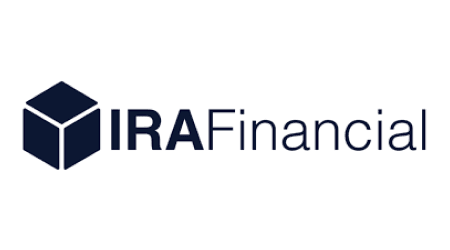-
Commitment to our readers
18 years
Helping you save money
Reviewed
by experts
Cited by
major publications
Finder maintains full editorial independence to ensure for our readers a fair assessment of the products, brands, and services we write about. That independence helps us maintain our reader's trust, which is what keeps you coming back to our site. We uphold a rigorous editorial process that ensures what we write and publish is fair, accurate, and trustworthy — and not influenced by how we make money.
We're committed to empowering our readers to make sound and often unfamiliar financial decisions.
We break down and digest information information about a topic, product, brand or service to help our readers find what they're looking for — whether that's saving money, getting better rewards or simply learning something new — and cover any questions you might not have even thought of yet. We do this by leading with empathy, leaning on plain and conversational language that speaks directly, without speaking down.
Invest in alternative assets, with tax advantages
- Choose from a variety of self-directed retirement account options, including Solo 401(k)s.
- Invest in alternative assets like real estate, crypto, private businesses and more.
- Take advantage of tax benefits to grow your retirement savings.
Paid non-client promotion. Finder does not invest money with providers on this page. If a brand is a referral partner, we're paid when you click or tap through to, open an account with or provide your contact information to the provider. Partnerships are not a recommendation for you to invest with any one company. Learn more about how we make money.
Finder is not an advisor or brokerage service. Information on this page is for educational purposes only and not a recommendation to invest with any one company, trade specific stocks or fund specific investments. All editorial opinions are our own.
The basics of a Solo 401(k)
A Solo 401(k) plan is an individual retirement account designed for business owners. Here’s what you need to know:
Who qualifies
To be eligible for a Solo 401(k), you must be self-employed with no employees except your spouse.
Eligibility requirements
There are no income or age requirements to qualify. Freelancers, independent contractors and small businesses with no qualifying employees (excluding your spouse) generally qualify for a Solo 401(k).
The only caveat is that your business should be legit, ongoing and regularly attempt to turn a profit. For example, if your business consistently operates at a loss every year, and you can’t show the intention to generate earned income, the IRS may classify your business as a hobby, which can impact your Solo 401(k).
What is a qualifying employee?
The IRS defines a qualifying employee in the following ways:
- A full-time employee working more than 1,000 hours per year
- A part-time employee working at least 500 hours per year for three consecutive years
Contribution limits
With a Solo 401(k), you are both the employee and employer.
- Elective deferrals. As an employee, you can invest up to $23,500 per year, with an additional $7,500 in catch-up contributions if you’re 50 or over.
- Employer non-elective contributions. As the employer, you can contribute up to 25% of your earned income.
The total you can contribute towards your Solo 401(k) in 2025 is $70,000 ($23,500 as an employee + $46,500 as an employer), along with any applicable catch-up contributions, plus $7,500 for applicable catch-up contributions, which could bring your total to $77,500 if you’re 50 or over.
Tax advantages
Solo 401(k)s can help you save for retirement and come with distinct tax benefits:
- Before retirement. With a traditional 401(k), you invest your money with pretax income, which can reduce your taxable income for the year.
- After retirement. If you opt for a Roth 401(k), your contributions are made with after-tax dollars. That means your withdrawals, which include both your contributions and returns, are tax-free.
Deadline to open one
The deadline to open a Solo 401(k) is the same as your business tax return deadline, including deadline extensions. This date depends on your self-employed business entity.
| Tax status | Filing deadline | Extended deadline |
|---|---|---|
S-corp | March 17, 2025 | September 15, 2025 |
Partnership | March 17, 2025 | September 15, 2025 |
C-corp | April 15, 2025 | October 15, 2025 |
Sole proprietor | April 15, 2025 | October 15, 2025 |
What to watch out for with Solo 401(k)s
Consider the following drawbacks of Solo 401(k)s to see if its the right retirement account for you:
- No employer contributions. With employer-sponsored 401(k)s, some employers will match your contribution. But Solo 401(k)s don’t have this option for these extra savings — all the money comes directly from your paycheck.
- Continual compliance. To maintain your Solo 401(k), you’ll always need to demonstrate profit or the potential to earn income. And you’ll never be able to hire employees, which may impact a growing business.
- Contribution limits. Even if you have a Solo 401(k) for a side gig separate from your full-time job, you can’t max out your 401(k) contributions twice.
- High fees. Total plan fees can range anywhere between 0.37% to 1.42%, which can eat into the tax benefits of a 401(k).
- Early withdrawal penalties. Unlike brokerage accounts, a 401(k) plan charges an extra 10% tax if you withdraw before age 59 1/2. The only exception is if you can demonstrate financial hardship.
Is my spouse eligible for a Solo 401(k)?
Yes, your spouse can contribute to your Solo 401(k) account, even as a full-time W-2 employee in your business. As long as you both receive taxable income, you can both invest in the account.
How to set up a Solo 401(k)
Here’s a quick rundown on the steps to open a Solo 401(k):
- Select a provider. Compare plan administrators to find a provider that fits your needs, including fees, investment options and customer experience.
- Create your plan documents. Fill out all the employer application paperwork, including elections on your investment choices.
- Review employee disclosures. Learn how the plan works, as well as employees’ rights and responsibilities.
- Provider opens your Solo 401(k). The account should be formed by your business’s tax filing deadline.
- Fund your Solo 401(k). Make contributions to your account in monthly installments or as a lump sum.
What information do I need?
When completing a Solo 401(k) application, you’ll need the following details handy:
- Employer taxpayer ID number (EIN)
- Name and address of the plan administrator (the person who manages the account)
- Social Security number
- Phone number
- Address
- Government-issued ID
What brokers offer Solo 401(k)s?
| Brokerage firm | Fees | Account minimum | |
|---|---|---|---|
| None | ||
Vanguard |
| None | |
| None |
While many brokers offer $0 commissions, you’re still responsible for fund expenses.
4 alternatives to Solo 401(k)
If a Solo 401(k) isn’t the right fit, consider these four individual retirement account options that generally boast a larger selection of investment choices and lower administrative fees than 401(k)s:
Traditional IRA
A traditional individual retirement account (IRA) is another investment account that offers tax benefits. Your contributions may be tax-deductible, and you only pay taxes when you withdraw from your IRA.
The maximum annual amount you can contribute in 2024 and 2025 is $7,000 — or $8,000 if you’re at least 50 years old.
Roth IRA
Roth IRAs offer similar perks to traditional IRAs, except that you fund the Roth account with post-tax money. That means your withdrawals are tax-free.
SEP IRA
A simplified employee pension (SEP) individual retirement account (IRA) is an employer-sponsored retirement plan. Only employers can make contributions to the account, and the amount can vary each year.
If you use self-employed income to fund the account, you’ll have a higher contribution limit than a traditional or Roth IRA. The max contribution amount $70,000 for 2025.
Defined benefit plans
A defined benefit plan is a pension plan that calculates your retirement benefits based on a formula. Several factors that impact your retirement amount include your length of employment and salary.
Unlike 401(k)s and IRAs, a defined-benefit plan doesn’t depend on investment returns.
Check out Finder's picks for the best brokerage accounts
Compare top brokerage accounts and apps to help you maximize your investment.
Bottom line
If your business is a one-man show, you can establish your own type of retirement account. But you’ll need to continually comply with the IRS guidelines for a Solo 401(k), which can put a damper on things if you’re trying to grow your business.
Frequently asked questions
Here are a few other popular questions surrounding Solo 401(k)s:
Ask a question
More guides on Finder
-
Top IRA Match Accounts for 2025: Boost Your Retirement Today
Get up to a 3% IRA match with Robinhood and Acorns or a 1% IRA match with Public. See how to qualify here.
-
5 Best SEP IRA Providers of 2025
Explore the pros and cons of the best SEP IRAs and learn how to open one of these accounts.
-
7 Best Rollover IRA Accounts of 2025
Explore the advantages and shortcomings of the best rollover IRAs for beginners, mobile trading, advanced traders and more.
-
Best retirement plans of 2025
Review the best retirement plans in 2025, from employer-offered to individually opened to retirement plans for small business owners.
-
403(b) vs. Roth IRA: How do they compare?
Compare the key differences in contribution limits, tax advantages and investment options between 403(b)s and Roth IRAs.
-
7 types of IRAs: Which is right for you?
Learn about the different types of IRAs and which is right for you.
-
10 Best Roth IRAs: 2025’s Top Picks to Build Your Retirement Savings
Check out our picks of the best Roth IRA accounts for beginners, options traders, hands-off investors and more.
-
10 Best IRA Accounts for 2025: Top Retirement Picks
Check out our picks of the best IRA accounts for beginners, options traders, hands-off investors and more.
-
Goldco Review 2025: Pros and Cons
Pros and cons to consider before you sign up for a Goldco precious metals IRA.

